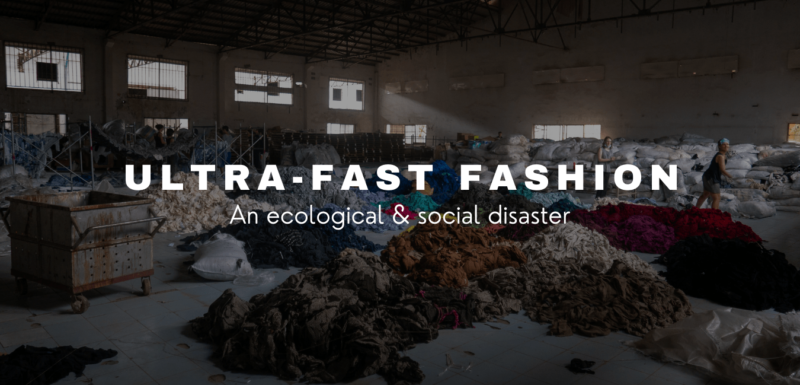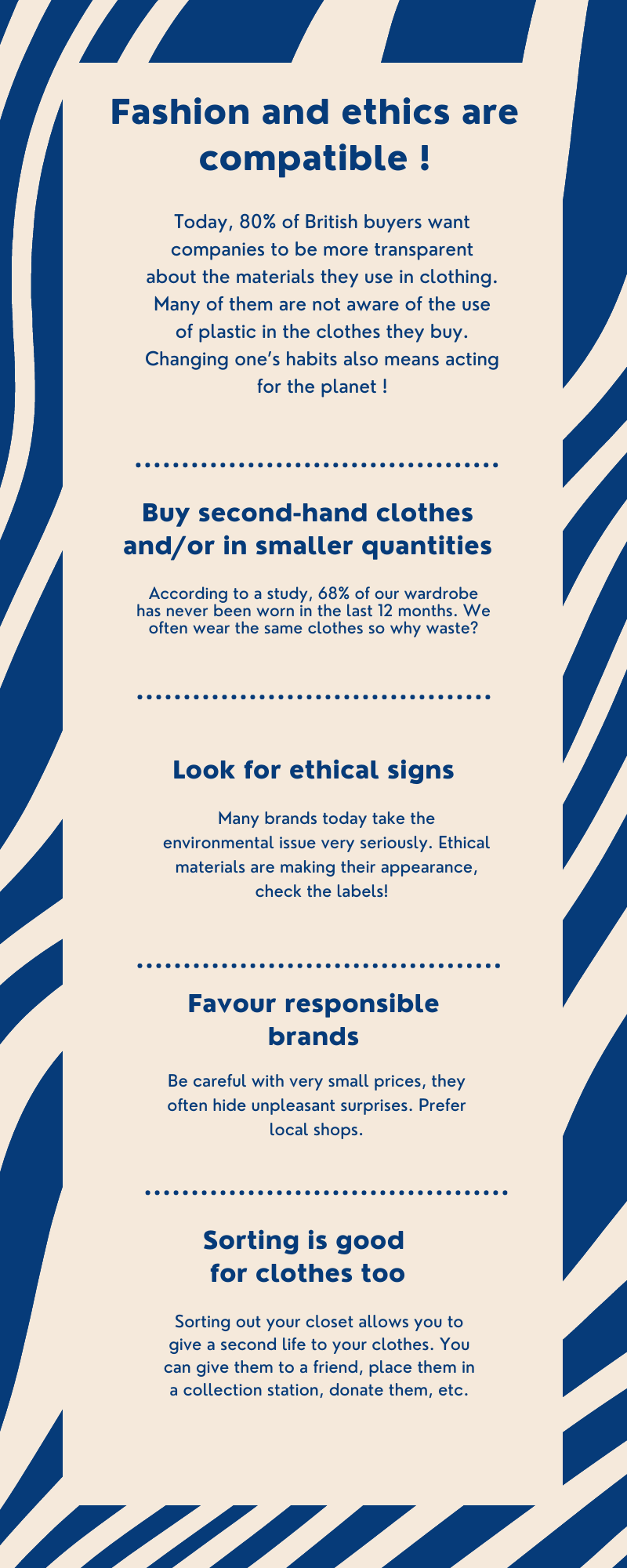A whole planet, victim of the ‘Ultra-Fast Fashion’
26 July 2021

Today, a new breeding of online brands is driving crazy the generation Z: these trading platforms owe their success to their low prices and accelerated production cycles. Selling more at the expense of quality to generate a maximum of impulse purchases: this phenomenon is called the #UltraFastFashion.
This trend has a heavy ethical and environmental price. Pollution, human rights violations, programmed obsolescence of products are some of the issues raised by this new economic model.
Here is an overview of the consequences of Fast Fashion, and the solutions available to bypass it.
The fashion industry, one step forward, two steps back…
In the last few years, the pollution produced by the fashion industry has become a central issue. Collaborations, special collections, ecology is now even invited to Fashion Week where some designers prefer to reduce the number of annual collections or adopt eco-responsible materials.
However, as it becomes more and more obvious that our wardrobe must also adapt to the ecological emergency, a new phenomenon is emerging. Called ultra-fast fashion, this new model mainly targets the new generation on social networks. Its motto: offer a wide range of products at very low prices. To meet the growing demand of consumers, these websites resort more and more to environmentally hazardous materials such as polyester, a petroleum derivative. When washed, the plastic microfibers that make up these clothes are released into the oceans. This invisible pollution disturbs marine organisms and animals that ingest plastic particles and contaminates the food chain. According to the ADEME, every year the equivalent of 50 billion plastic bottles are thrown back into the sea.
On a global level, the production of clothing has doubled over the last 15 years: we produce 100 billion items per year.

When the economy overcomes the climate
Physical stores are out of the question, money is what matters. Largely boosted by the explosion of social networks, these industries brilliantly handle the codes of online shopping. In a visual cyber-universe where appearance and trends are paramount, these brands do not hesitate to exploit users’ data in order to flood the web with targeted ads, or to call upon influential figures of the networks to promote their products. With discounts, everything is done to facilitate the user experience and allow him/her to buy more and more easily. While it is impossible to try on before buying, returns are free, which leaves an obvious footprint on the planet. From China, South Asia or Eastern Europe, the journey is a major part of the pollution of ultra-fast fashion. The fashion industry’s carbon footprint is estimated at 1.2 billion tons of CO2, or about 2% of global greenhouse gas emissions. If purchasing trends continue as they are, this share will reach 26% by 2050. A dress or a pair of jeans can travel up to 65,000 km before arriving at its destination. When we know that an e-commerce brand can renew its models every day, we let you do the math…

Beyond an ecological impact, an impact on human rights
In addition to the disastrous consequences on the climate, ultra-fast fashion is also the exploitation of workers. If buying clothes is now for many of us a full-fledged leisure activity, especially thanks to the Internet and social networks, there is behind it an environment that is not as pretty as the brand’s advertisements show. In Great Britain for example, these clothes are made in unsanitary workshops by workers paid half the minimum wage. As you can imagine, a dress at 12 euros or a t-shirt at 9 euros does not allow to pay properly a whole production chain. Health of the farmers, working conditions and wages are impacted by the fast fashion industry. In Bangladesh, women workers are paid $0.32 per hour (the lowest hourly rate in the world) and in Pakistan $0.55 per hour. This kind of “competitive advantage” for the big companies in this industry is in fact a form of exploitation.
“Today, you can order clothes from home almost without realizing it and very quickly via different platforms or social networks. As clothes are cheaper, the quantity sold each year has exploded. Recycling channels are literally suffocated by the mass of textile to manage."”
Our actions have an impact
It is now up to both consumers and the textile industry to fight for a healthier world and more responsible fashion. Today, both camps are calling for regulation to deal with the rise of ultra-fast fashion, with the implementation of eco-taxes or rewards for environmentally friendly brands. As for consumers, new studies have highlighted their desire to be better informed about the origin and composition of products when making a purchase.
What solutions for a more ethical fashion?
